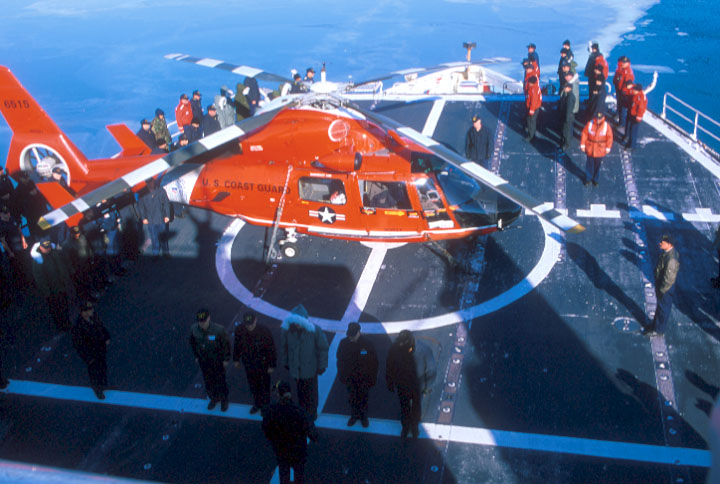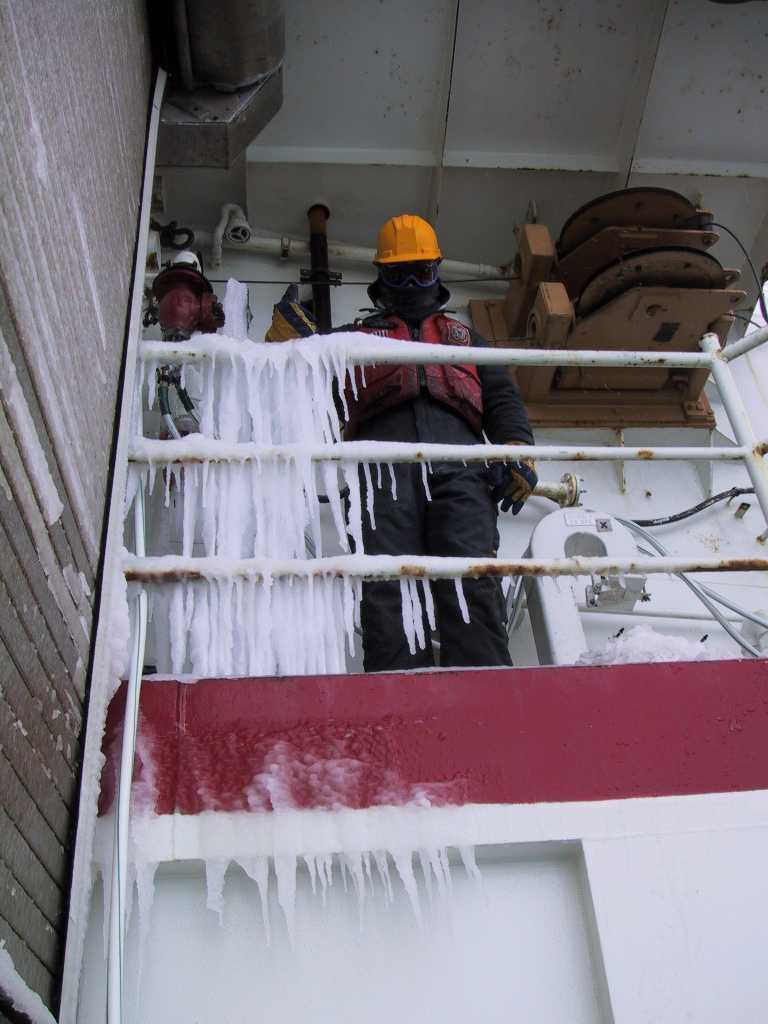 |
 |
 |
 |
 |
 |

Crew in muster form, preparing for helicopter operations. (Photo by J. Bump) 
Ari and Jackie in extreme cold weather gear, inside shipboard science lab. A balmy -40 F out with windchill today! (Photo by J. Clement) 
A view of the Polar Star's trail through the ice. (Photo by J. Bump) 
Helicopter fly-by (Photo by J. Bump) 
View of one of the 2 HH-65 Dolphin helicopters on board the Polar Star. The aviation crew painted one rubber duck for each spectacled eider collected for body tissue and stomach sample analysis. (Photo by J. Bump) 
Red-lit chart and dividers on the bridge at night time. At night, the ship is lit by red lights in order to prevent the crew on watch from having to continually readjust their vision when moving from darkened to lit areas. At first it was a little bit like walking around in hell, but it was actually pretty easy to get used to. (Photo by J. Bump) 
View of the Polar Star from above. (Photo by A. Balsom) 
Another view of the Bering Sea storm from the bridge. (Photo by A. Balsom) |
|  | 
The helicopter mechanic is required to keep the door open during take-off in case of emergency. During search and rescue missions, the mechanic is responsible for lowering and raising the rescue diver into the water and retrieving victims. They are required to fly on all missions. (Photo by J. Bump) 
Marine Science Technician Trevor on duty next to the frozen fire hose. (Photo by G. Sheffield) 
Ari, Amanda, and Jackie in the helo hangar. 
The day shift. Science ran 24 hour days, split into 12 hour shifts. (Photo by G. Sheffield) 
Leaving Dutch Harbor to begin the expedition. 
Ari getting flying lessons from Chris, a Coast Guard pilot. (Photo by D. Mosler) 
The view angle on a steep turn in the helo. (Photo by A. Balsom) 
A motivating high-five. (Photo by A. Balsom) |

